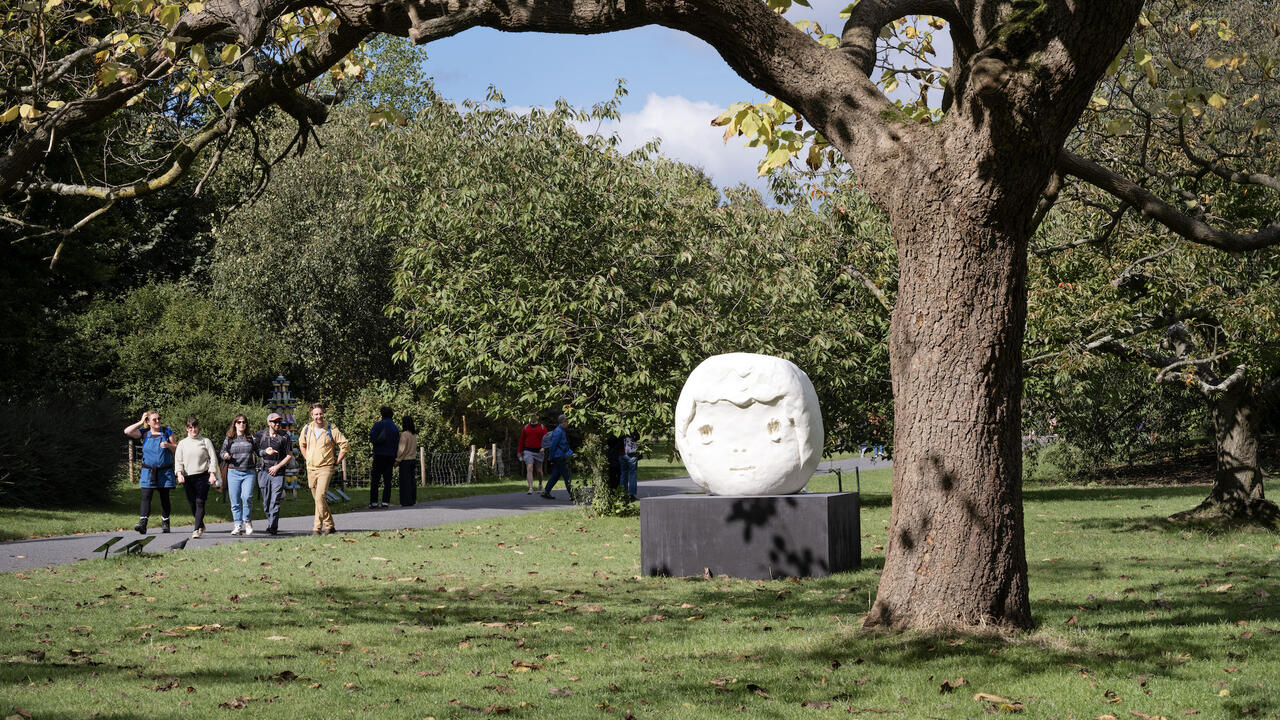Rivane Neuenschwander
Stephen Friedman Gallery, London, UK
Stephen Friedman Gallery, London, UK

Rivane Neuenschwander came to prominence through setting in motion poetic, chance-inflected interactions with the natural world (ants eat a world map made of honey, goldfish rearrange messages) and bringing an affective dimension to participatory works (describe your first love to a police sketch artist, tie a wish ribbon round your wrist). Here, though, the Brazilian artist presents sculpture, painting, collage and film with little sign of nature and no audience actions set up. The result is thought provoking but with less instant allure.
Two biographical details have played a formative role in the themes tackled in ‘The Reading Box, The Moon, Misfortunes and Crimes’, titled from entries in Walter Benjamin’s ‘Berlin Childhood Around 1900’ (1932–38). First, Neuenschwander has children, and – like any parent, particularly one with an interest in psychoanalysis – has valued watching them develop. Second, she lived in London between 2013 and 2015, triggering inter-continental correspondence with a friendship group who, like her, grew up in Brazil in the 1970s – leading to the project of collecting their childhood memories. Those influences feed into an interest in identity formation, which Neuenschwander examines through the mechanism of childhood memory at both the individual and – through the sense we have of ‘our generation’ – collective level.

Two of the four bodies of work at Stephen Friedman Gallery investigate fear in childhood. ‘The Name of Fear (Cut-out)’ (2017), is a group of collages derived from a workshop in which children made silhouettes evoking what they found ‘scary’, from snakes to bombs to open windows. A dark room contains the four-channel white on black animated projection Blind Man’s Bluff (2016), the starting point for which were drawings made by one boy over a period of two years from the age of five. They are the stuff of nightmares, and make for enveloping and somewhat unnerving viewing – but their jaggedly cartoonish rendering and the rapid switch between drawings prevents the installation from becoming oppressive. As with the collages, the serious matter of how fear impacts development is treated with a light touch.
The exhibition’s largest space situates the visitor as if under the strategy board game WAR, popular with Brazilian children in the 1970s. For History and Infancy (WAR) (2017), the game’s cards are turned into the communication system of maritime flags, hung tightly from the ceiling on hawsers and tethered to glacial boulders. The cards/flags show 42 territories to conquer, plus Neuenschwander’s addition of the Guarani Aquifer, a vast subterranean reservoir that lies beneath Argentina, Brazil, Paraguay and Uruguay that might easily bring nations into conflict. Is it too late to inculcate the value of using its resources collaboratively in preference to the assertion of national boundaries?

‘Tabloid Stories’ (2017), 15 small acrylics on wood panels, is inspired by traditional Latin American ex-voto paintings. Placed in churches as offerings, ex-voto paintings depict events for which grace is sought. As in previous series, Neuenschwander has absented the figures to highlight the architectural backgrounds, setting up a dialogue with geometric abstraction. Now she adds two recurring motifs: a ghostly egg shape that floats semi-transparently over the scene, possibly representing a saint; and various splashes, runs and small pools of blood that, when considered against each work’s title (eg Boxing Ring, Operating Theatre, Passage), hint ominously at the fate of the absent figures suggested.
Fear, war and crime, then, feed into an evocative but somewhat melancholy investigation of how we become who we are. Given how hard it is to understand the motivations behind the recent slew of apparently inhuman acts, such an enquiry is disturbingly relevant.
Main image: Rivane Neuenschwander, History and Infancy (WAR), 2017, installation view, Stephen Friedman Gallery, London. Fabric, silkscreen paint, rope, twine and glacial boulders, dimensions variable. Courtesy: Stephen Friedman Gallery, London
























